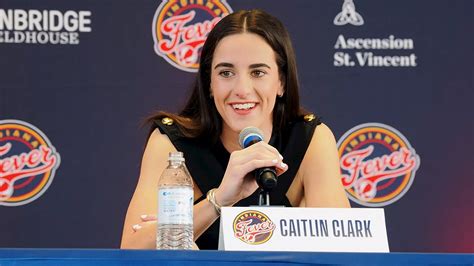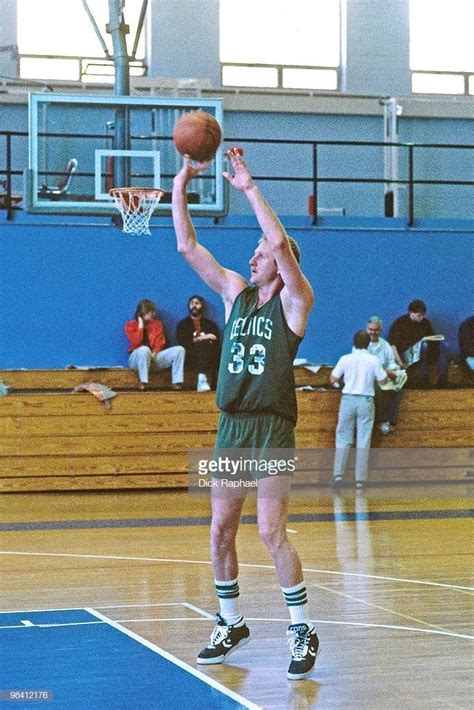
Breanna Stewart dismissed Caitlin Clark’s deep three-point attempts with a laugh, labeling them “funny” during a recent press conference, sparking debate about the evolving landscape of women’s basketball and the differing styles of play between seasoned veterans and rising stars.
Breanna Stewart, a two-time WNBA champion and MVP, offered a candid assessment of Caitlin Clark’s signature deep three-point shots, simply stating, “That’s funny!” The remark, made during a press conference following the New York Liberty’s Commissioner’s Cup game against the Indiana Fever on Saturday, June 15, 2024, has ignited discussions across the basketball world, highlighting the contrast between the established stars of the WNBA and the highly touted rookies entering the league. While Stewart’s comment might seem dismissive on the surface, it underscores the strategic differences and varying levels of experience within the league.
Stewart’s New York Liberty secured a dominant 91-80 victory over Clark’s Indiana Fever, further emphasizing the disparity between the two teams. The Liberty, a veteran-laden squad with championship aspirations, showcased their experience and cohesion against a Fever team still finding its footing in the league. Clark, despite her individual brilliance, struggled to make a significant impact in the game, scoring just three points on 1-for-10 shooting from the field.
The context surrounding Stewart’s statement is crucial to understanding its implications. Clark, known for her audacious long-range shooting during her collegiate career at Iowa, has continued to launch deep three-pointers in the WNBA. However, the professional game presents a different set of challenges, with tighter defenses and more experienced opponents. Stewart’s “funny” remark likely refers to the lower efficiency of these shots in the WNBA compared to Clark’s college performance.
“Everybody is physical in this league,” Stewart stated during the press conference, alluding to the increased physicality and defensive intensity of the WNBA. “That’s the first thing. Just because you’re a rookie doesn’t mean you’re not going to get calls. You have to earn them.” This statement implicitly addresses some of the officiating controversies surrounding Clark, who has often voiced frustration with the lack of foul calls she receives.
Stewart’s comments also highlight the broader narrative of the WNBA’s growth and evolution. The league has seen a surge in popularity, driven in part by the arrival of players like Clark, but also by the continued excellence of established stars like Stewart, Diana Taurasi, and Candace Parker. This influx of talent and increased media attention has created a dynamic environment where rookies are quickly learning the nuances of the professional game, while veterans are striving to maintain their dominance.
The contrast between Stewart and Clark represents a generational shift within the WNBA. Stewart, a seasoned veteran with multiple championships and individual accolades, embodies the traditional model of WNBA success: a well-rounded game, consistent performance, and a strong emphasis on team play. Clark, on the other hand, represents the new wave of players who are pushing the boundaries of the game with their exceptional shooting range and offensive creativity.
The exchange between Stewart and Clark also touches on the topic of respect and rivalry within the WNBA. While there is undoubtedly a sense of competition between players, there is also a deep respect for the game and its history. Stewart’s comments, while seemingly critical, could also be interpreted as a veteran offering advice and guidance to a young player navigating the challenges of the WNBA.
The impact of Stewart’s statement extends beyond the basketball court. It has sparked conversations about the role of media in shaping narratives, the pressures faced by young athletes, and the expectations placed on rookies entering professional sports. The incident also serves as a reminder that the WNBA is a league of experienced professionals who have dedicated their lives to the game and are not easily impressed by hype or potential.
Furthermore, it’s crucial to examine Stewart’s own game and career trajectory. She didn’t become a two-time WNBA champion and MVP overnight. She honed her skills, adapted to the league’s physicality, and learned from her own experiences. Her “funny” remark can be seen as a reflection of that journey and a challenge to Clark to undergo a similar process of growth and adaptation.
The dynamic between established stars and rising rookies is a recurring theme in professional sports, and the WNBA is no exception. The league’s veterans have a responsibility to mentor and guide the next generation of players, while the rookies have a responsibility to learn and adapt to the demands of the professional game. The exchange between Stewart and Clark underscores this dynamic and highlights the importance of both experience and potential in shaping the future of the WNBA.
In conclusion, Breanna Stewart’s “funny” remark about Caitlin Clark’s deep three-point attempts is more than just a casual comment. It is a reflection of the evolving landscape of the WNBA, the contrast between established stars and rising rookies, and the ongoing debate about the most effective style of play in the professional game. It highlights the nuances of the WNBA, where raw talent must be tempered with experience and strategic adaptation to thrive. Stewart’s statement, though brief, encapsulates the broader narrative of the WNBA’s growth, competitiveness, and the challenges faced by young players entering the league.
To truly understand the context of Stewart’s statement and the ensuing discussion, it’s crucial to delve into the specific performance metrics of both players, the strategic approaches of their respective teams, and the overall dynamics of the WNBA.
Performance Metrics:
Caitlin Clark’s transition from college to the WNBA has been met with both excitement and scrutiny. Her scoring average in college was astronomical, fueled by her ability to hit deep three-pointers with remarkable accuracy. However, in the WNBA, defenses are tighter, and opponents are more experienced, leading to a decrease in her shooting percentage. While she still attempts several deep three-pointers per game, the success rate has not been as high as it was in college. This difference is often attributed to the increased physicality and defensive strategies employed in the WNBA.
Breanna Stewart, on the other hand, has consistently demonstrated a high level of efficiency throughout her WNBA career. Her scoring is not solely dependent on long-range shots; she excels in all facets of the game, including driving to the basket, posting up defenders, and creating opportunities for her teammates. This versatility makes her a more difficult player to defend and contributes to her overall effectiveness. Stewart’s career stats reflect a well-rounded game that prioritizes efficiency and team play.
Strategic Approaches:
The New York Liberty, led by Stewart, operate with a strategic approach that emphasizes ball movement, defensive intensity, and a balanced offensive attack. Coach Sandy Brondello has instilled a system that relies on multiple players contributing on both ends of the court. This approach contrasts with the Indiana Fever, which, while possessing individual talent like Clark, is still developing a cohesive team strategy. The Fever’s offense often revolves around creating scoring opportunities for Clark, which can become predictable and easier for opposing defenses to counter.
The Liberty’s defensive scheme is designed to limit easy looks and force opponents into contested shots. This strategy is particularly effective against players like Clark who rely heavily on long-range shooting. By applying constant pressure and denying open looks, the Liberty can disrupt the Fever’s offensive flow and force turnovers.
WNBA Dynamics:
The WNBA is a league characterized by intense competition and a deep sense of camaraderie among players. While there is undoubtedly a desire to win, there is also a mutual respect for the game and its history. Veteran players like Stewart often take on a mentoring role, guiding younger players and helping them navigate the challenges of professional basketball.
The league’s growth in popularity has brought increased media attention and scrutiny, which can add pressure to young players like Clark. Veterans are often more adept at handling this pressure, having developed coping mechanisms and a strong sense of self-assurance. The dynamic between established stars and rising rookies is a crucial aspect of the WNBA’s evolution, as the league strives to maintain its competitiveness while fostering the development of future talent.
The “funny” remark by Stewart can also be interpreted as a form of veteran hazing, a common practice in professional sports where experienced players test the mettle of rookies. While the comment may have seemed dismissive on the surface, it could also be seen as a challenge to Clark to prove herself and earn the respect of her peers.
The incident also underscores the importance of perspective and context in interpreting statements made by athletes. Stewart’s comment was made in the heat of the moment, following a dominant victory by her team. It is possible that her intention was not to belittle Clark but rather to emphasize the difference between college and professional basketball.
Furthermore, the media’s role in amplifying the story should not be overlooked. News outlets often focus on controversial statements and rivalries to generate clicks and engagement. This can create a distorted perception of the actual dynamics between players and teams.
In the wake of Stewart’s comment, many players and coaches have weighed in on the topic, offering their perspectives on Clark’s game and the challenges she faces in the WNBA. Some have defended Clark, praising her talent and potential, while others have echoed Stewart’s sentiments, emphasizing the need for patience and adaptation.
The incident has also sparked a broader discussion about the different styles of play in women’s basketball. Some argue that the WNBA should embrace the more offensive-minded approach popularized by players like Clark, while others believe that the league should maintain its emphasis on defense and team play.
Ultimately, the exchange between Stewart and Clark serves as a microcosm of the larger dynamics at play in the WNBA. It highlights the challenges faced by young players entering the league, the importance of experience and adaptation, and the ongoing debate about the most effective style of play. It emphasizes the nuance and depth within the sport, moving beyond simplistic narratives.
Expanded Context and Analysis:
The WNBA has undergone significant evolution since its inception in 1996. Initially, the league was characterized by a more traditional style of play, emphasizing fundamentals, defense, and inside scoring. Over time, the game has become more perimeter-oriented, with increased emphasis on three-point shooting and offensive creativity. This shift has been driven by the emergence of players like Diana Taurasi, Maya Moore, and now, Caitlin Clark, who have revolutionized the game with their exceptional shooting range and offensive skills.
However, the WNBA has also maintained its commitment to defense and team play. Coaches and players recognize that winning championships requires a balanced approach, with strong performances on both ends of the court. This emphasis on defense is one of the key differences between the WNBA and college basketball, where offensive firepower often takes precedence.
The increased physicality of the WNBA is another factor that distinguishes it from college basketball. WNBA players are generally stronger and more athletic than their college counterparts, leading to more intense battles in the paint and on the perimeter. This physicality can be particularly challenging for rookies who are not accustomed to the level of intensity.
Caitlin Clark’s arrival in the WNBA has brought unprecedented attention to the league. Her games have drawn record television ratings and attendance figures, and her merchandise has become a hot commodity. This increased visibility has been a boon for the WNBA, but it has also placed added pressure on Clark to perform at a high level.
The expectations surrounding Clark are immense. She is expected to not only score at a high rate but also to lead her team to victory and help grow the league’s popularity. These expectations can be overwhelming, especially for a rookie who is still adjusting to the professional game.
Breanna Stewart, as one of the league’s most accomplished players, understands the pressures faced by young athletes. She has experienced the highs and lows of professional basketball and has learned how to navigate the challenges of media scrutiny and fan expectations. Her “funny” remark, while seemingly critical, could also be seen as a way of tempering expectations and reminding Clark that success in the WNBA requires more than just talent.
The incident has also raised questions about the role of race and gender in shaping perceptions of female athletes. Some have argued that Clark, as a white player, has benefited from preferential treatment and media coverage compared to her Black counterparts. Others have dismissed these claims, arguing that Clark’s popularity is simply a reflection of her exceptional talent and marketability.
The debate over race and gender in sports is a complex and sensitive topic, and it is important to approach it with nuance and understanding. It is undeniable that racial and gender biases exist in society, and these biases can influence how athletes are perceived and evaluated. However, it is also important to recognize that individual talent and effort play a significant role in determining success in sports.
The WNBA has made significant strides in promoting diversity and inclusion, but there is still work to be done. The league must continue to create opportunities for athletes of all backgrounds to succeed and must address any systemic biases that may exist.
In the long run, the exchange between Stewart and Clark will likely be remembered as a minor footnote in the history of the WNBA. However, it serves as a valuable reminder of the challenges faced by young players entering the league, the importance of experience and adaptation, and the ongoing debate about the most effective style of play. It also highlights the complexities of race, gender, and media scrutiny in professional sports.
The incident underscores the dynamic narrative of women’s basketball, where established stars and rising rookies constantly redefine the game and push the boundaries of what is possible. It’s a narrative filled with competition, respect, and a shared love for the sport, all contributing to the ever-evolving landscape of the WNBA.
The dialogue between Stewart and Clark, whether intentional or not, has ignited a broader conversation that extends far beyond the basketball court, touching on societal issues, media representation, and the evolution of sports.
Frequently Asked Questions (FAQ):
-
What exactly did Breanna Stewart say about Caitlin Clark’s deep three-point attempts? Breanna Stewart said “That’s funny!” when asked about Caitlin Clark’s tendency to shoot deep three-pointers during a press conference after the New York Liberty’s Commissioner’s Cup game against the Indiana Fever. The comment has been interpreted as a dismissive remark about the lower success rate of those shots in the WNBA compared to Clark’s college career.
-
Why is Breanna Stewart’s comment considered controversial? Stewart’s comment is considered controversial because it could be interpreted as a veteran player belittling a rookie. It also highlights the differences in playing styles and experiences between established WNBA stars and incoming rookies, and potentially touches upon underlying narratives about respect, rivalry, and the evolution of the game.
-
How has Caitlin Clark performed in the WNBA so far compared to her college career? Caitlin Clark’s performance in the WNBA has been mixed. While she has shown flashes of brilliance, her shooting percentage, especially from deep three-point range, has been lower compared to her college career. This is attributed to the increased physicality and defensive intensity of the WNBA.
-
What is the overall context of the New York Liberty vs. Indiana Fever game where this incident occurred? The New York Liberty defeated the Indiana Fever 91-80. The Liberty, a veteran-laden team, displayed superior cohesion and experience. Clark struggled in the game, scoring just three points on 1-for-10 shooting. This victory further emphasized the disparity between the two teams, with the Liberty aiming for a championship and the Fever still in a rebuilding phase.
-
What are some of the broader implications of Stewart’s comment for the WNBA? Stewart’s comment highlights the evolving landscape of the WNBA, the contrast between established stars and rising rookies, and the challenges faced by young players entering the league. It also sparks conversations about media narratives, the pressures faced by athletes, and the importance of experience and adaptation in professional basketball. Furthermore, it touches on topics of race, gender, and the expectations placed on athletes in the WNBA, promoting a deeper understanding of the league’s complex dynamics.









